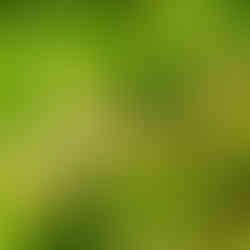LINDEN
- Dave

- Mar 30, 2023
- 4 min read
Updated: Apr 8
Linden

Botanical Name
Tilia spp. (especially T. cordata Mill., also T. platyphyllos Scop., T. americana L., T. europaea L., T. argentea, and T. platypus.). Flos Tiliae or Tiliae flos (pharmacopeial names)
Common Name
Linden, lime flowers, lime blossom, lime tree, basswood, beetree, tilia, tilleul, tilo, tiglio, cirimbo, sirimo
Family
Tiliaceae
Parts Used
Flowers and bracts, charcoal (from the wood), leaf, twigs inner bark
Native To
T. americana is native to North America, while T. cordata, T. platyphyllus, T. europea (and others) are native to Europe
Harvesting Guidelines
Linden flowers are best harvested on a dry day in early to midsummer, immediately after flowering when their aroma is strongest. To preserve their medicinal properties, dry in the shade away from direct heat and sunlight. Avoid over-drying, which can degrade essential oils.
Linden (Tilia spp.), also known as lime blossom or basswood, is a deciduous tree found across Europe and North America. It produces small, pale-yellow, fragrant flowers that are widely used in herbal medicine. The flowers are the most commonly used part of the plant, though the leaves, inner bark, and even wood have medicinal value. Linden trees are typically large with heart-shaped leaves and thrive in temperate climates, especially in moist, well-drained soils.
Linden flowers are commonly used in teas and tinctures for their calming, antispasmodic, and diaphoretic properties. They are widely employed to treat conditions such as insomnia, anxiety, nervous headaches, colds, coughs, and fevers. Due to their mild flavor and soothing properties, linden infusions are popular for both adults and children. Linden is also used for hypertension and stress-related cardiovascular symptoms, often in combination with other herbs like hawthorn.
Modern Use
Linden flowers are commonly used in teas and tinctures for their calming, antispasmodic, and diaphoretic properties. They are widely employed to treat conditions such as insomnia, anxiety, nervous headaches, colds, coughs, and fevers. Due to their mild flavor and soothing properties, linden infusions are popular for both adults and children. Linden is also used for hypertension and stress-related cardiovascular symptoms, often in combination with other herbs like hawthorn.
Indigenous and Historical Use
Linden has a long-standing history of medicinal use in European herbal traditions. It is included in the German Commission E Monographs, the British Herbal Compendium, and the WHO Monographs on Medicinal Plants. In North America, various Native American tribes used the inner bark for gastrointestinal issues and as an emergency bandage. The Iroquois, for example, used linden bark from trees struck by lightning for snakebites and internal bleeding, reflecting a spiritual reverence for the tree's power.
Spiritual and Energetic Use
Linden has traditionally been associated with peace, protection, and matters of the heart. In European folklore, the tree was often planted in the center of villages as a gathering and justice tree, believed to foster calm and fairness. The flower essence is used in energetic medicine to open the emotional heart, encourage trust, and ease grief or emotional contraction. Its cooling energy is beneficial for conditions of emotional heat and tension.
Scientific Studies
Anti-Inflammatory and Antioxidant Properties
Study: A 2017 study demonstrated that phenolic compounds from Tilia platyphyllos exert antioxidant, anti-inflammatory, and antitumor activities. nutrition-and-wellness.com+5Natural Care Tips+5PubMed+5
Anti-Tumor Effects
Study: Research published in Food & Function evaluated the therapeutic properties of a hydroethanolic extract from Tilia platyphyllos in HPV16-transgenic mice. The extract was found to be safe and well-tolerated, though further studies are needed to determine its chemopreventive potential. RSC Publishing+1PubMed+1
Anti-Cancer Effects on Pancreatic Cells
Study: An investigation into various Tilia species revealed that their extracts modulate oxidative stress and inflammation, exerting anti-cancer effects on MIA PaCa-2 pancreatic cancer cells.
Adult Dose (6)
Infusion (Tea):Steep 2.0 grams of dried flower in 150 mL boiling water for 10–15 minutes, taken once or twice daily.For fever: Use 2–3 tsp of blossoms infused in one cup water, drink three times/day as a diaphoretic.
Tincture:2–4 mL of a 1:5 tincture in 45% alcohol, 1–3 times per day.For general calming or insomnia, 10 mL once or twice daily may be used.
Safety:
Linden is generally very safe and well tolerated.
Rare reactions: Hypersensitive individuals may experience urticaria or allergic rhinitis.
Cardiotoxicity warning: There are unconfirmed concerns that very high doses or long-term use may stress the heart, particularly in those with existing cardiac conditions.
Always consult a practitioner before use during pregnancy or with heart medications.
Actions
Anodyne,Antifungal,Antinociceptive,Antispasmodic,Antitussive,Astringent,Demulcent,Diaphoretic,Diuretic,Emollient,Expectorant,Hepatoprotective,Hypotensive
Energy
Cooling
References:
King, J., Felter, H. W., & Lloyd, J. U. (1898). King's American Dispensatory. Cincinnati: Ohio Valley Co.Available Online
Blumenthal, M., et al. (2000). Herbal Medicine: Expanded Commission E Monographs. Austin: American Botanical Council.
Hoffmann, D. (1998). The Herbal Handbook: A User's Guide to Medical Herbalism. Healing Arts Press.
Nesom, G. (2002). Plant Guide for Basswood (Tilia americana L.). USDA NRCS.View PDF
World Health Organization. (2010). WHO Monographs on Medicinal Plants Commonly Used in the Newly Independent States (NIS). Geneva: WHO.
Information offered on Achula and on this page is for educational purposes only. Achula makes neither medical claim, nor intends to diagnose or treat medical conditions. Women who are pregnant or nursing, and persons with known medical conditions, should consult their licensed healthcare provider before taking any herbal product. Links to external sites are for informational purposes only. Achula neither endorses them nor is in any way responsible for their content. Readers must do their own research concerning the safety and usage of any herbs or supplements.
tags:
Herbal medicine course
herbal school
wildpluk cursus
kruiden opleiding
geneeskrachtige planten
herborist
become a herbalist








